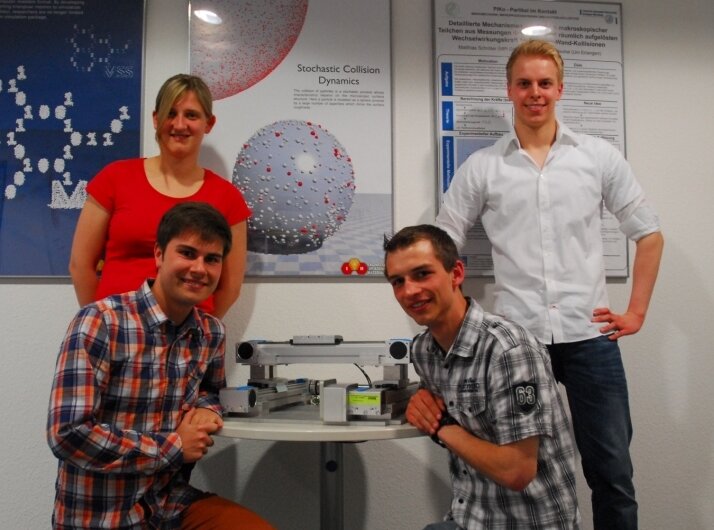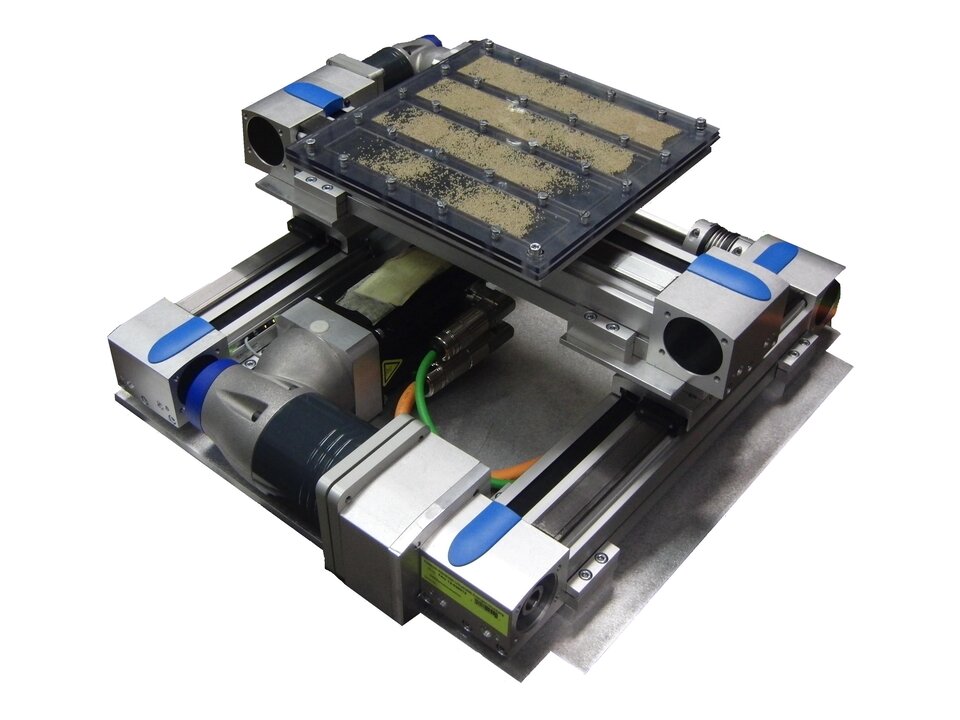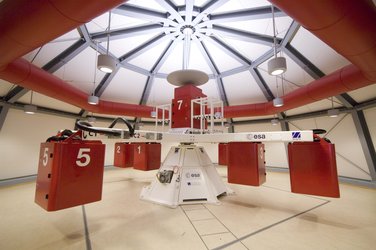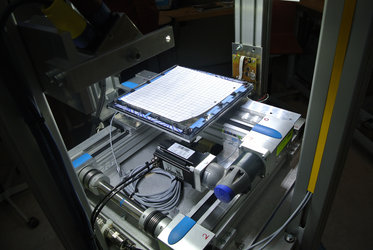Meet the team: Fall of Fame
A team of university students has been selected to develop and perform their microgravity experiment during ESA's ‘Drop Your Thesis!' 2013 campaign. Here is an introduction to the team.
![]()
![]()
Mechanisms of stripe formation in vibrated granular materials
![]()
![]()
| University | Friedrich-Alexander Erlangen-Nürnberg University |
| Endorsing professor |
Thorsten Pöschel Friedrich-Alexander Erlangen-Nürnberg University |
| Assistant scientist |
Achim Sack Friedrich-Alexander Erlangen-Nürnberg University |
| Team | Benjamin Mockenhaupt, Philipp Neuner, Raphaela Prach, Tobias Netter |

The Fall of Fame Team is composed of four bachelor students from Friedrich-Alexander Erlangen-Nürnberg University in Germany. They are investigating whether stripe formation caused by particle wall friction is inhibited under reduced gravity, when the normal force between particles and ground is null.
The phenomena studied in this project belongs to the stratification category. As a result of a dynamic process, particles arrange themselves in the shape of stripes. Stratification of particles is observed when particles of different sizes, densities and surface properties are mixed in a shallow container and then subjected to horizontal vibrations. The particles rearrange themselves in stripes that are perpendicular to the direction of the shaking.
A previous experiment investigated the structural formation of mustard seeds that had a radius of approximately 1.1 mm. The particles were confined in an unpolished 50x10 cm aluminum box which was then mounted and shaken by a motor to subject it to horizontal vibrations.
The formation of stripes was observed within the first few seconds. After about 10 seconds, the system reached an almost stationary state, showing only slow changes over time.
This effect can be considered the result of a frustration effect. Free particles can roll on the bottom of the container, feeling a relatively small force of rolling friction. Particles inside the stripes are in contact with the bottom of the container, as well as with other particles, and their rolling motion is consequently suppressed due to hindrance by the much greater static friction.
Numerical simulations by D. Krengel showed that stripe formation did occur when the particles’ coefficient of static friction was set to zero.

This project intends to experimentally validate this result. In the absence of gravity, stripe formation is expected to be inhibited because of the vanishing normal force which results in a system without static friction between the jammed particles and the bottom of the container.
In order to be able to use the ZARM drop tower, the size of the box and particles were reduced. The new system contains a movable platform of about 25 x 25 cm2, on which four boxes are set up. To avoid significant influence from the side walls, each of the boxes has an area of 4 x 20 cm2. The particles used are Amaranth grains, which have a diameter of about 0.8 – 1.2 mm. They are put inside the boxes using different particle densities.
The boxes are made of two plexiglass panels, each around 5 mm thick. Between these panels is a thinner panel of a thickness of 1.5 mm, from which four rectangular boxes for the particles were cut out. The boxes are closed at the top and bottom with the thicker panels that are anti-static. The whole unit is fixed on a moving aluminum platform. The grains will be agitated with amplitudes varying between 32 and 36 mm and frequencies of 2.0 – 2.2 Hz.
Read the final experiment report on the ERASMUS Experiment Archive.






